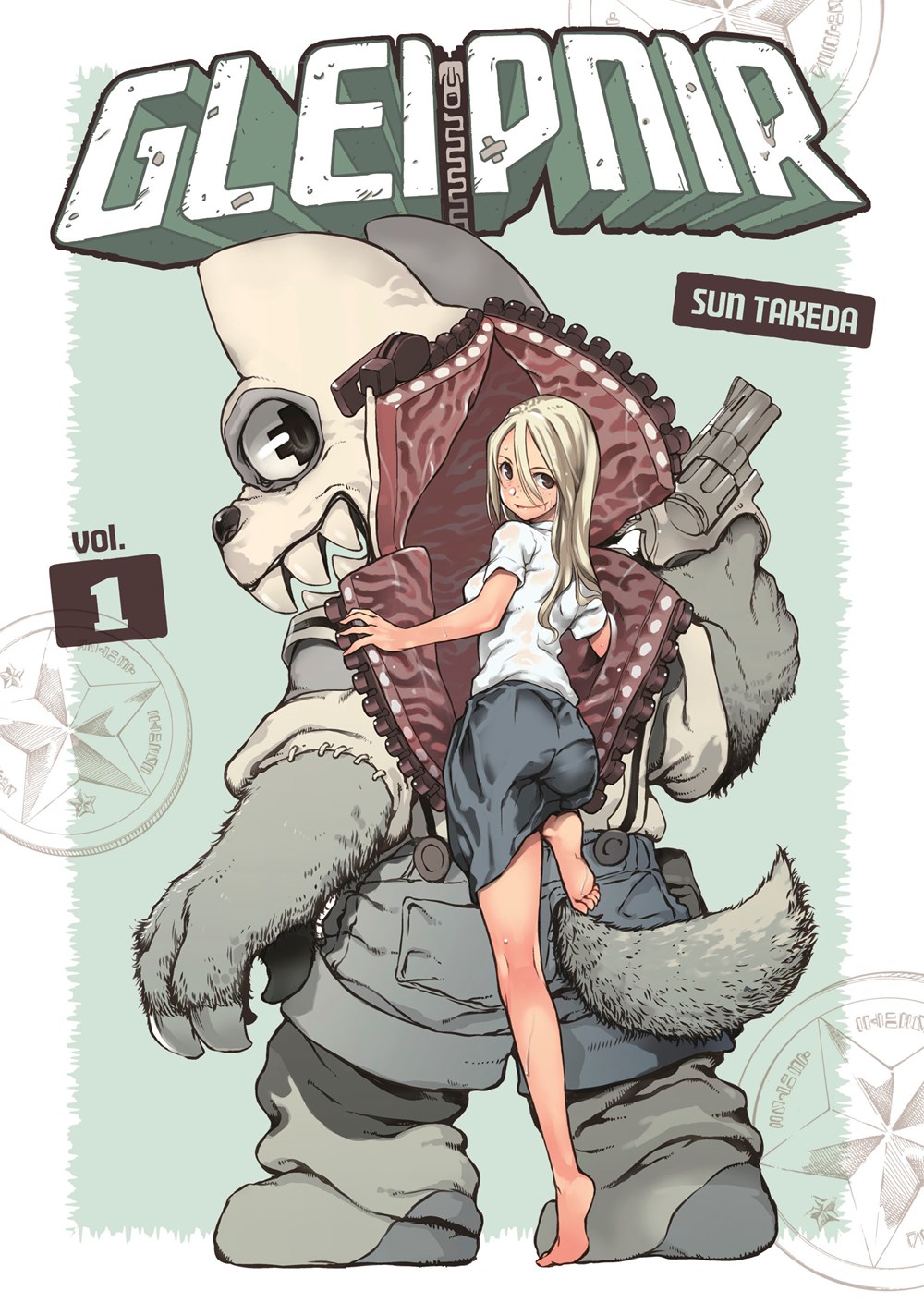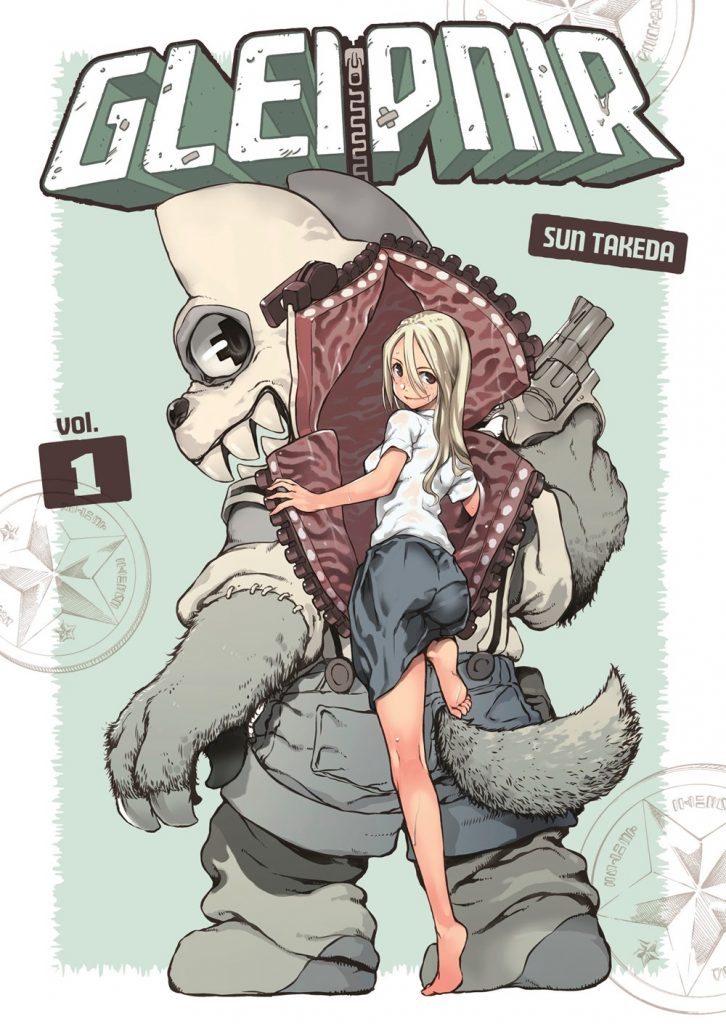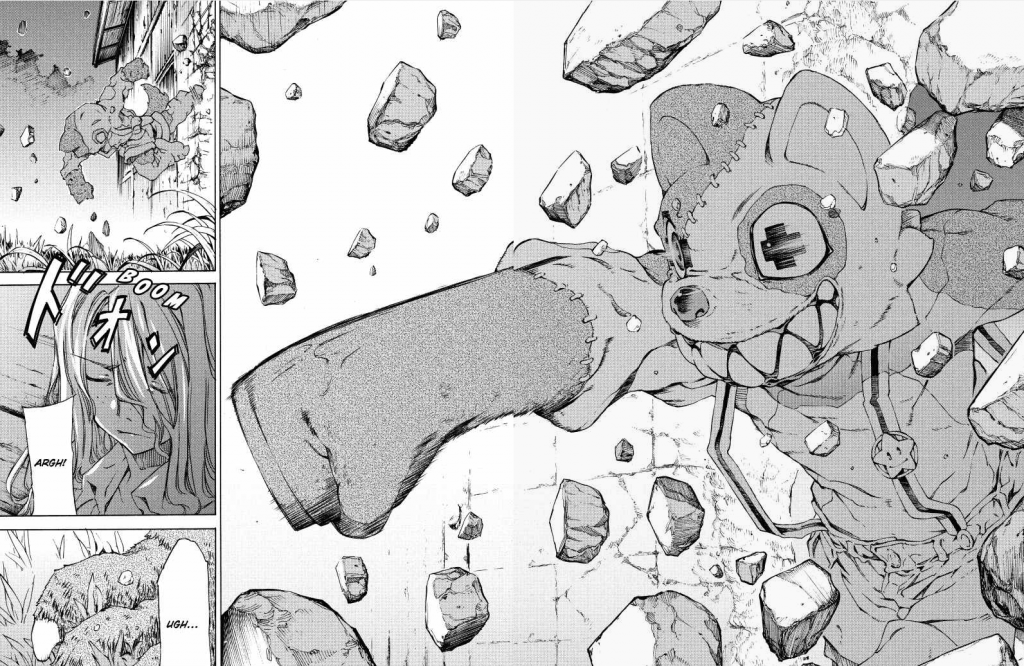Let’s be blunt and call it like it is; a lot of the manga published in the United States is really horny. And a lot of comics, especially shonen and seinen manga, are pretty violent. The combination can be particularly egregious at times; such is the case with Gleipnir, a furiously horny comic about a suicidal, manipulative high school girl named Claire and her classmate Shuichi who can turn into a mascot-like superpowered monster.
Like so many of the leading figures of shonen manga, Shuichi is a sensitive, brooding teen who wants absolutely nothing to do with this strange set of abilities, and is particularly self-loathing because of them. This is a fairly standard archetype, and Sun Takeda doesn’t do much to develop Shuichi in these first few chapters. Near the beginning of the book we see him decline a scholarship he’s earned because he’s “a monster.” That self-hatred is a constant through-line in the comic, and puts much of the action of the book into a specific perspective. Shuichi is trying as best he can to live a normal life and hide his secret abilities from his friends and classmates. But when he rescues Claire from a suicide attempt via arson, he thinks he’s used his powers for good. He’s momentarily elated, but unwittingly reveals his identity to her. That proves to be his downfall – Claire is particularly vicious, and her knowledge of his secret allows her to manipulate him into doing whatever she wants.
Manipulation and domination are the key themes of the first volume of Gleipnir, because in addition to being coerced by Claire, Shuichi also has a giant zipper that runs down his back when he is in monster form. This zipper opens him up like a suit, and allows Claire to wear him like a costume, using his superhuman strength and stamina to fight another monster (because of course there are other monsters). As Shuichi gets more involved with Claire, her domineering becomes more intense and brutal; at the end of the climax of the first volume, Claire uses Shuichi’s abilities to kill another person using a giant gun that’s a part of his costume. There’s some intense emotion in this first book, and I get a sense that things are only going to get darker as the series progresses. This key feature of Gleipnir is one of the reasons I continued to read it. Takeda’s character writing is believable and compelling.
Earlier in the review I said this book was horny. That fact is immediately evident on the cover, and then immediately more evident on the first page, where the second panel features a “nothing left to the imagination” upskirt shot and a sweat drop gleaming on one of Claire’s thighs. Gleipnir runs in Kodansha’s Young Magazine the 3rd, which is a young men’s anthology, and this sort of thing happens a lot in those kind of mags, but I don’t think I would be very far off by saying that this is probably the horniest, sleaziest comic serializing in that anthology right now. The upskirt shot is prominent throughout Gleipnir; it’s honestly a defining characteristic of Sun Takeda’s panel compositions. While a lot of manga have fan-service built in, very few feel this blatant – most of it happens during action scenes or in little sidebars where all the female characters go out for a bath or a swim. In Gleipnir, it’s baked into the flow of the reading experience, so it feels more prominent.
Much of the universe of Gleipnir is being built in the first volume, but Takeda is laying groundwork to introduce other people who transform into monsters, and the source of the power seems to come from some kind of magical vending machine. The clownish design of Shuichi’s suit as well as the fantastical power source feels starkly at odds with the violence and fan service of the book, but in a way, it all coalesces. Gleipnir takes the volume knobs on all of the popular features of a seinen manga, and then turns them up to eleven. The question is – is that something you want? Because if it is, look no further. Otherwise, keep your distance.
Sequential State is made possible in part by user subscriptions; you subscribe to the site on Patreon for as little as a dollar a month, and in return, you get additional content; it’s that simple. Your support helps pay cartoonists for illustration work, and helps keep Sequential State independent and ad-free. And if you’re not into monthly subscriptions, you can also now donate to the site on Ko-Fi.com. Thanks!




